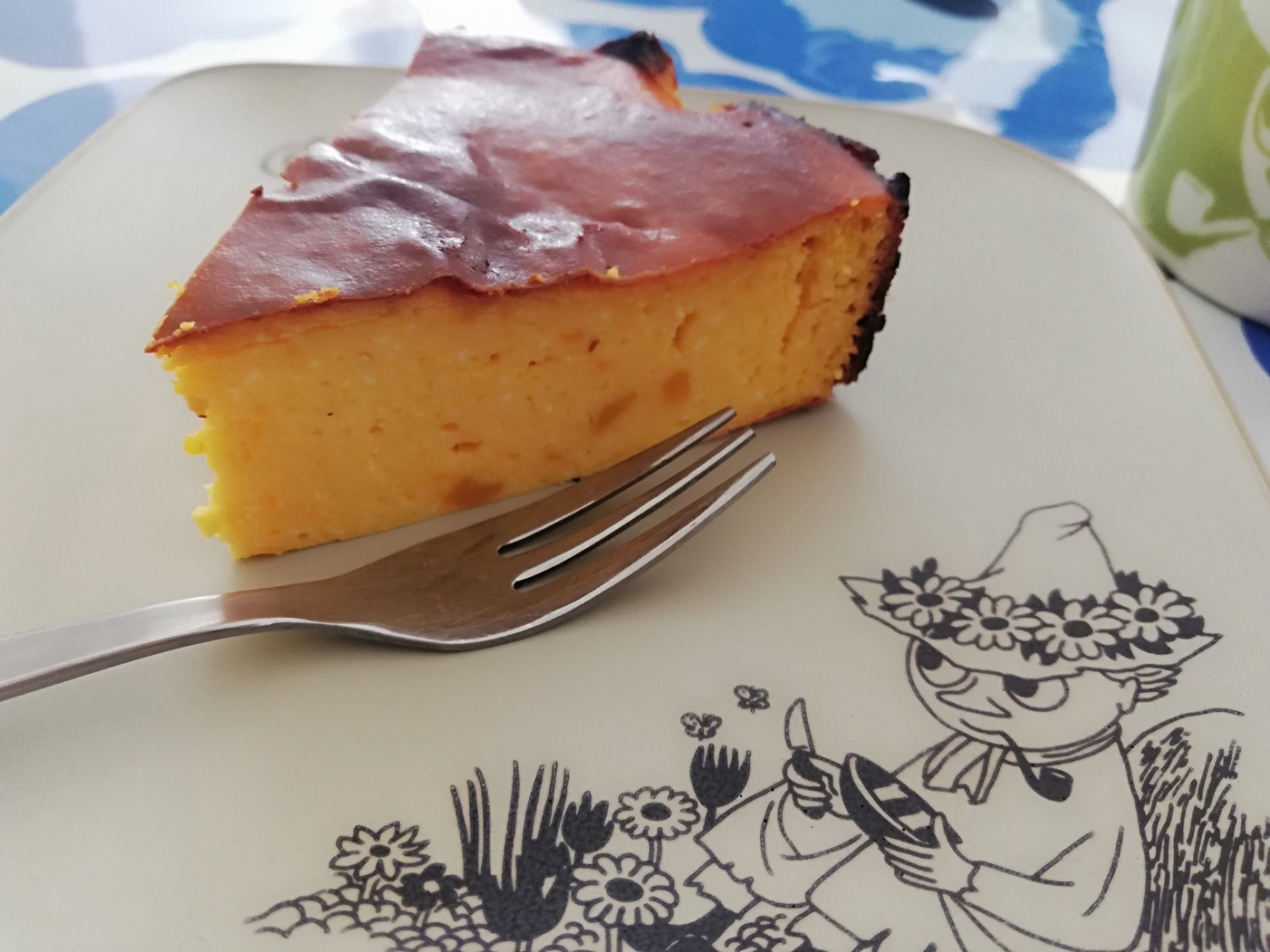Authentic Basque Burnt Cheesecake: Versatile Recipe with Kabocha Squash, Sweet Potato, or Classic
Master Three Delicious Cheesecake Variations with One Recipe: Moist and Rich Basque Burnt Cheesecake (Kabocha, Sweet Potato, Classic)

Cheesecake is a staple snack in our household, and it’s always a hit, especially when paired with a hot Americano! During the winter, adding sweet kabocha squash or creamy sweet potato makes it even more satisfying and decadently sweet. Everyone I share it with raves about the delightful flavor. This single recipe allows you to create three wonderfully different, delicious cheesecakes!
Ingredients- 250g Cream cheese, softened at room temperature
- 250g Kabocha squash or sweet potato, peeled, steamed, and mashed until smooth
- 50ml Heavy cream
- 100ml Milk
- 1 Tbsp All-purpose flour
- 70g Granulated sugar
- 2 Large eggs, whole
Cooking Instructions
Step 1
First, you can enjoy this recipe in three variations. If you prefer a classic plain cheesecake, simply omit the kabocha squash (or sweet potato) in the following steps. For a sweet potato cheesecake, substitute sweet potato for kabocha squash in the same quantity. Before you begin, ensure your cream cheese is softened at room temperature. If using kabocha squash or sweet potato, peel, steam until tender, and then mash them thoroughly with a fork until very smooth.

Step 2
In a bowl, combine the softened cream cheese with the mashed kabocha squash (or sweet potato). Mix with a whisk or spatula until there are no lumps and it’s smooth. Then, add the milk (100ml) and heavy cream (50ml) and mix again until well combined. The total volume of milk and cream combined is 150ml; you can adjust this ratio slightly according to your preference.

Step 3
Next, add the granulated sugar (70g) and the two whole eggs. Mix thoroughly until all ingredients are fully incorporated and the mixture is homogenous. Pay close attention to ensure there are no streaks of egg white visible; this is crucial for achieving a wonderfully smooth cheesecake texture.

Step 4
Prepare your baking pan(s). This recipe yields enough batter for two pound cake molds or one 18cm round springform pan. Line the inside of your chosen pan(s) with parchment paper. For easier handling, you can lightly dampen the parchment paper, wring out excess water, and then press it into the pan to help it conform to the shape. If using a round pan, pour all the batter into it. If using two pound cake pans, divide the batter equally between them. For an even smoother texture, you can sift the batter through a sieve before pouring it into the pans.

Step 5
Preheat your oven to 220°C (425°F). Place the filled pan(s) in the preheated oven and bake for 30 to 40 minutes. The baking time can vary slightly depending on your oven and the temperature of the batter. Bake for at least 30 minutes, then check the top. Continue baking in 5-minute increments, watching the color of the top until it reaches your desired level of ‘burnt’ appearance. Once baked, remove from the oven and let it cool completely on a wire rack. (The photo shows the kabocha version baked for 35 minutes, which came out slightly less browned.)

Step 6
This photo shows the sweet potato version baked for 35 minutes. Using a round pan seems to result in a more delicious, evenly ‘burnt’ surface, which is characteristic of Basque cheesecake! The slightly charred top adds a wonderful depth of flavor.

Step 7
This last photo is of the cheesecake made with only cream cheese, baked for 35 minutes. Since it doesn’t contain kabocha or sweet potato, the proportion of fat is higher, resulting in a beautifully glossy, shiny surface. The classic version offers a pure and intense cheesy flavor.

Step 8
It is highly recommended to chill the finished cheesecake in the refrigerator for at least overnight before serving. This resting period allows the flavors to meld and the texture to develop into a wonderfully moist and chewy consistency. To store leftover cake, place the lid of a food storage container over the cake itself, trapping the moisture inside. If you wrap the cake in parchment paper, it’s also convenient to pick up and eat by hand!



